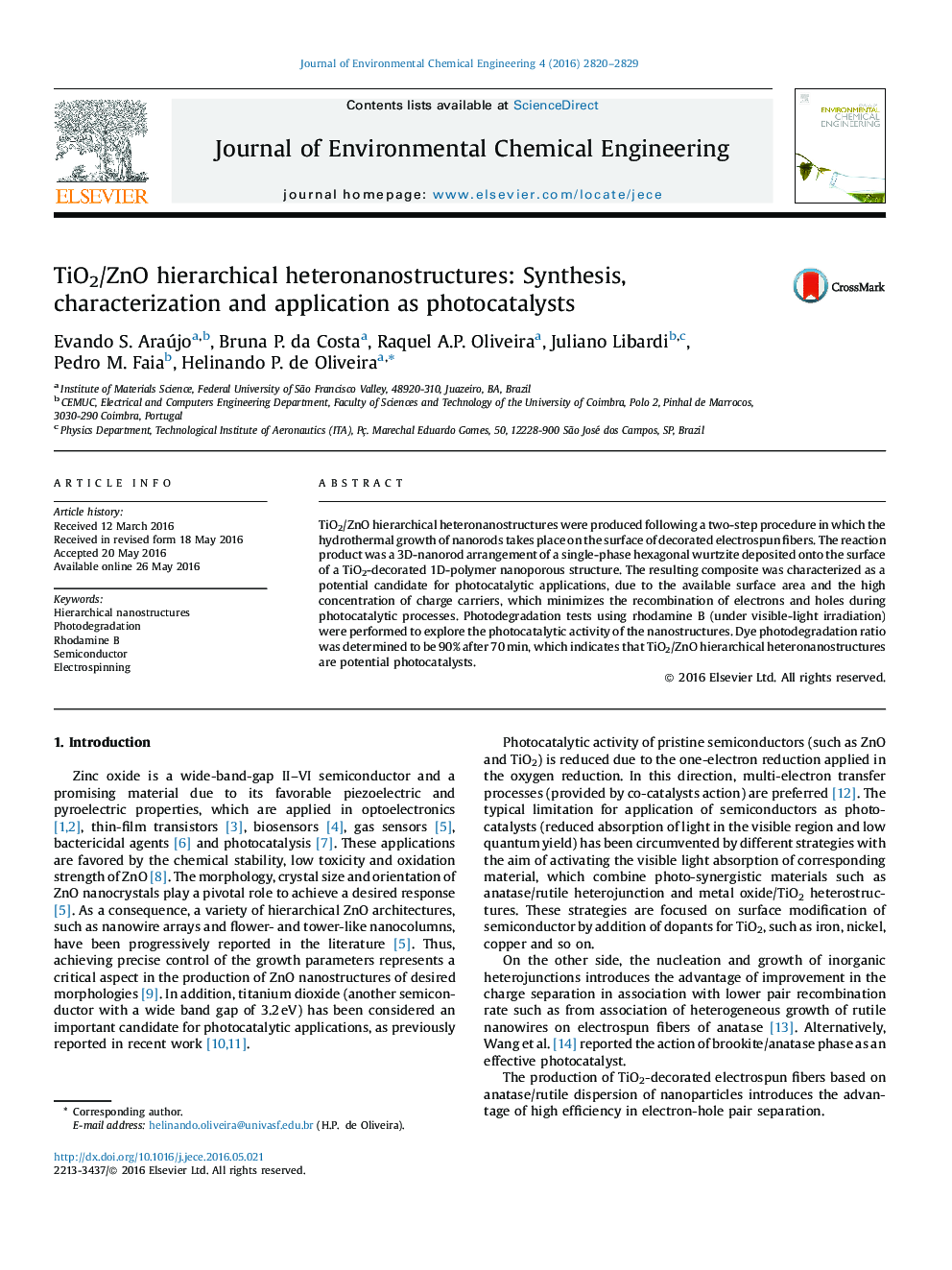| Article ID | Journal | Published Year | Pages | File Type |
|---|---|---|---|---|
| 221548 | Journal of Environmental Chemical Engineering | 2016 | 10 Pages |
•Hierarchical structures of TiO2/ZnO on 1D organic fibers present photocatalytic activity against organic dyes.•Wurtzite crystal structures are favored to grown on TiO2–decorated electrospun fibers.•Photodegradation rate of rhodamine B of 90% is established for 70 min of action of new photocatalyst.
TiO2/ZnO hierarchical heteronanostructures were produced following a two-step procedure in which the hydrothermal growth of nanorods takes place on the surface of decorated electrospun fibers. The reaction product was a 3D-nanorod arrangement of a single-phase hexagonal wurtzite deposited onto the surface of a TiO2-decorated 1D-polymer nanoporous structure. The resulting composite was characterized as a potential candidate for photocatalytic applications, due to the available surface area and the high concentration of charge carriers, which minimizes the recombination of electrons and holes during photocatalytic processes. Photodegradation tests using rhodamine B (under visible-light irradiation) were performed to explore the photocatalytic activity of the nanostructures. Dye photodegradation ratio was determined to be 90% after 70 min, which indicates that TiO2/ZnO hierarchical heteronanostructures are potential photocatalysts.
Graphical abstractFigure optionsDownload full-size imageDownload as PowerPoint slide
